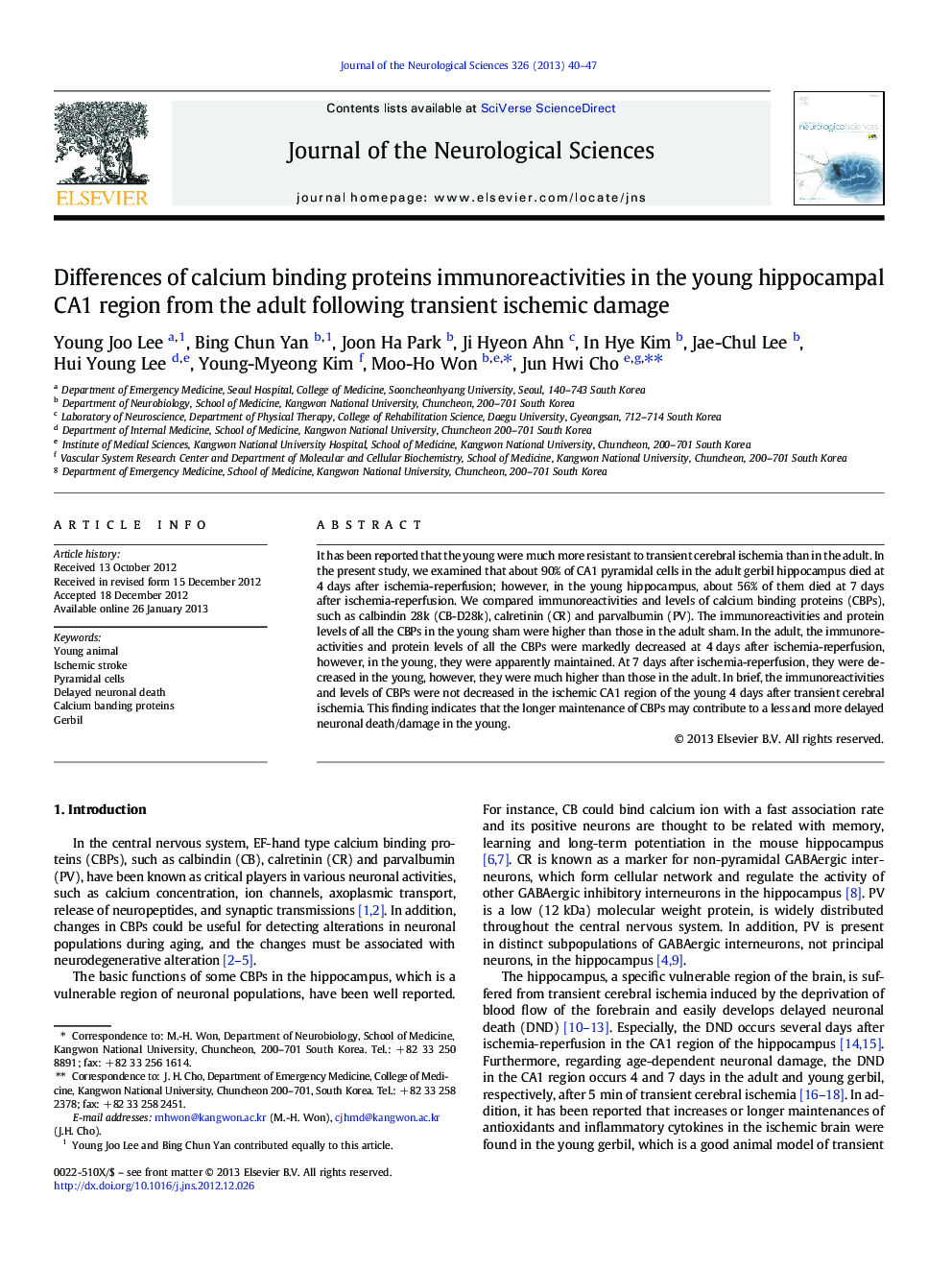| Article ID | Journal | Published Year | Pages | File Type |
|---|---|---|---|---|
| 1913857 | Journal of the Neurological Sciences | 2013 | 8 Pages |
It has been reported that the young were much more resistant to transient cerebral ischemia than in the adult. In the present study, we examined that about 90% of CA1 pyramidal cells in the adult gerbil hippocampus died at 4 days after ischemia-reperfusion; however, in the young hippocampus, about 56% of them died at 7 days after ischemia-reperfusion. We compared immunoreactivities and levels of calcium binding proteins (CBPs), such as calbindin 28k (CB-D28k), calretinin (CR) and parvalbumin (PV). The immunoreactivities and protein levels of all the CBPs in the young sham were higher than those in the adult sham. In the adult, the immunoreactivities and protein levels of all the CBPs were markedly decreased at 4 days after ischemia-reperfusion, however, in the young, they were apparently maintained. At 7 days after ischemia-reperfusion, they were decreased in the young, however, they were much higher than those in the adult. In brief, the immunoreactivities and levels of CBPs were not decreased in the ischemic CA1 region of the young 4 days after transient cerebral ischemia. This finding indicates that the longer maintenance of CBPs may contribute to a less and more delayed neuronal death/damage in the young.
